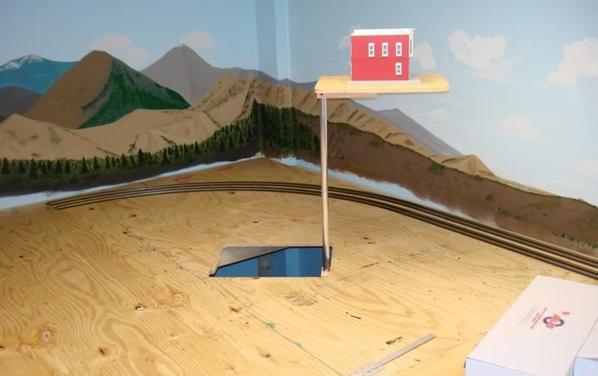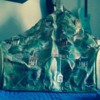Can you talk a little more about the background mural? I think it came out great. Do you have any sort of art training, did you work off of picture or painting, did you first sketch it out, what material is it on and what type of paint did you use. You should be quite happy with how it came out.
Tom
Thanks much Tom. I have been painting off and on for years. I have limited skills as far as painting people go, but do okay with scenic and 'Plein Air' style painting. I wanted this mural to be as stylized as the standard gauge trains are. I wanted it to blend-in with the style of the ingeniously designed engines, cars, and accessories.
For inspiration, I looked at a lot of WPA murals and certain industrial type artists. I wanted one side to be the downtown steam-shrouded city area, and the other to be the smoke-belching factory area. Tones are all in the blue grey arena except for the sunset and its effects. I chose the muted grey and blue tones because I wanted the mural to be muted and not too bright having an 'aesthetic distance' to it. But the main reason is for the muted tones is that I didn't want to upstage the incredible colors of the trains. I wanted them to be the stars.
This mural was painted on masonite. First I primed the masonite with Gesso, which is pretty much a standard for painting on board. After the priming, I sketched what I wanted, roughing in the hills and mountains, but taking ruler to the buildings in order to get the correct (and sometimes hyper-exaggerated) perspectives. I used oil paint exclusively, and the colors were mixed with oleopasto and quick drying medium for faster setup. Lastly I coated it all with the modeler's choice for top coats: Future floor Finish. It's a big no-no among serious painters, but the modeler in me knew it was gonna be fine. It gives the exact shine that I wanted which causes the tones and colors to look a little 'deeper'. Thanks again for asking and for your comments. 






















